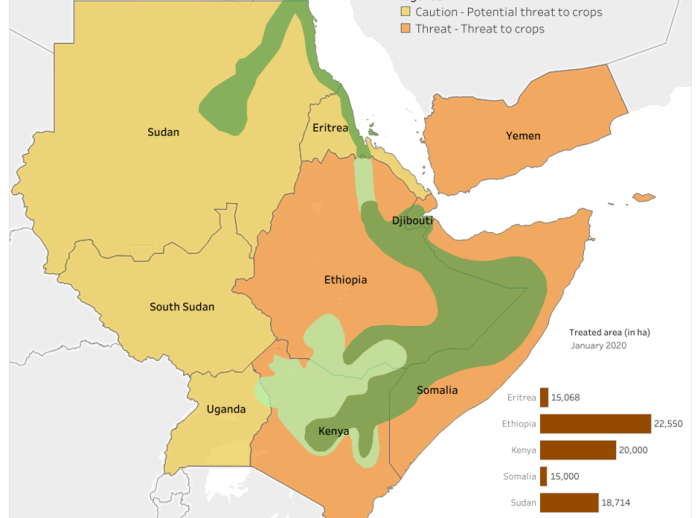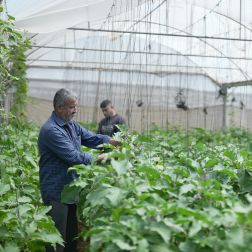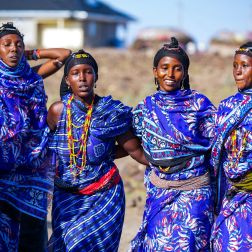- 3 mins read time
- Published: 18th February 2020
Inside East Africa's massive locust infestation
Taking advantage of favourable breeding conditions, locusts hit farmers and herders in areas already reeling from climate shocks.
Desert locust infestations have moved across Kenya, Somalia and Ethiopia, and are now entering areas of northern Uganda. The insects are also threatening Sudan and South Sudan, and there are reports of locust swarms now in Tanzania.

The desert locust is among the most dangerous migratory pests in the world: A large desert locust plague can contain up to 58 million individuals per square mile, with half a million locusts weighing approximately one ton. One ton of locusts eats as much food in one day as about 10 elephants, 25 camels or 2,500 people.
"We depend on livestock and if there is no fodder for our livestock, life will be difficult for us, we ask for help urgently," said Mohammed Hassan Abdille, a farmer from Bura Dhima in Tana River, Kenya. This is the worst locust crisis in 70 years for Kenya alone.
The locusts have hit the region after countries there were affected by huge droughts and in some areas flash floods. There are currently 22.8m people facing severe food insecurity in these countries following consecutive failed rainy seasons, unusual floods, and storms.
The fast-moving locust swarms have been made worse by the climate crisis because they are feeding on new vegetation, the result of unusual weather patterns. They are devastating pastures and grasslands and could ruin new food crops during the March-to-July growing season.
Oxfam's Response
Oxfam is gearing up its humanitarian operations and will work closely with local partners and communities. Program staff in the region report they aim to reach more than 190,000 of the most vulnerable people with cash assistance, livestock feed, seeds, and health services.
In Somalia, together with local partners, Oxfam intends to assist 11,670 households of the most vulnerable people. In Kenya, Oxfam will work in seven of the 13 affected counties to assist 3,000 households in the first phase of operations, and another 5,000 in the second. In Ethiopia, Oxfam aims to reach another 5,000 households with similar aid. Oxfam will need to secure more than €4.6 million (£3.8 million) to mount this response.
Unusual rains advance breeding
This outbreak has been exacerbated by climate change. Cyclones that struck the Arabian Peninsula last year created ideal conditions for desert locusts to multiply. The swarms crossed to the Horn of Africa, where unusually heavy rains late last year created favorable breeding conditions. Heavy rain leads to growth of vegetation in arid areas, providing locusts with more food, and the conditions needed to develop and reproduce.
You can help Oxfam respond to the locust crisis in East Africa.




